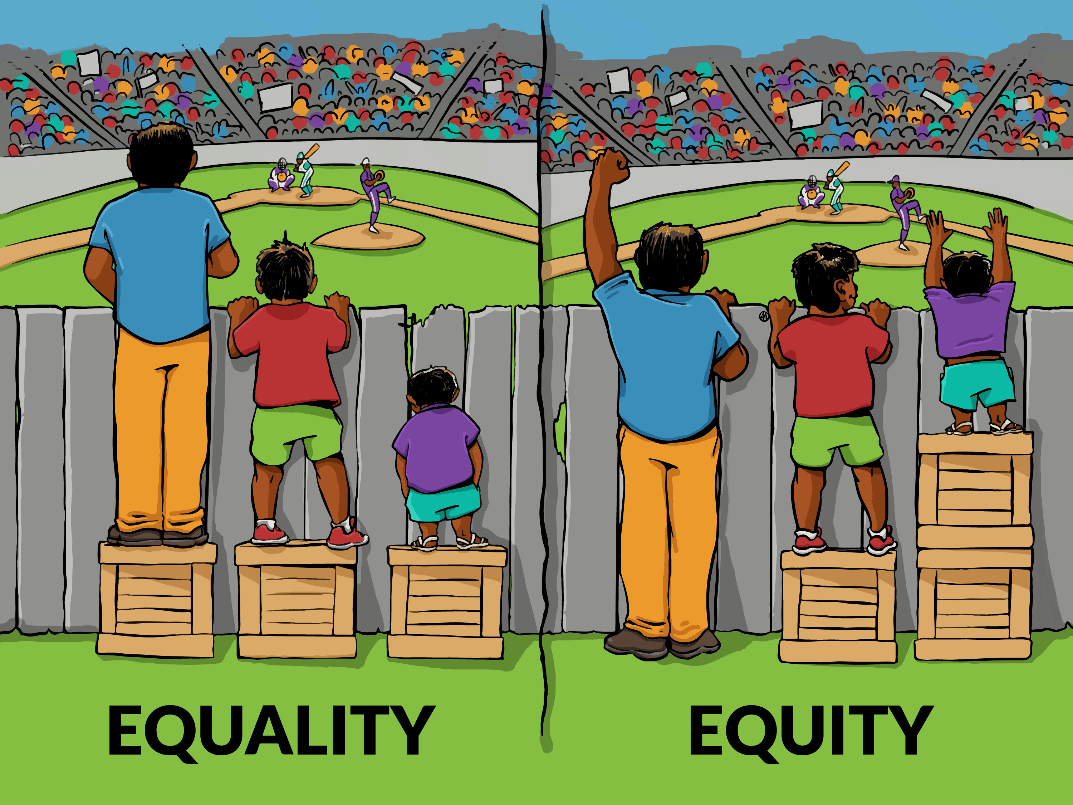Diversity, Equity, & Inclusion (DEI)
What are Diversity, Equity, and Inclusion?
Diversity, Equity, and Inclusion are the pillars of equal opportunity to fully participate in any given setting or situation. Although each pillar represents a different aspect of opportunity, all three pillars are needed for true opportunity to be available to everyone for access and participation.
The definitions of these 'pillar' terms, from the Salisbury University Office of Diversity & Inclusion site, are as follows:
- Inclusion: The act of creating environments in which any individual or group can feel welcome, respected, supported and valued. An inclusive climate embraces differences and offers respect in words and actions so that all people can fully participate in the University's opportunities. Although often placed last in titles and acronyms for inclusive initiatives (such as the commonly used acronym DEI), inclusion is the backbone of equal opportunity. You can't have diversity and/or equity without being inclusive For example, a room full of kittens of all different breeds is not truly diverse if all the kittens are male; this would be an example of diversity (different breeds) without inclusion (females not included). Additionally, people can be given different amounts of tax refunds based on wages, but then denied service to spend that money in an establishment; this is an example of equity (different tax refund sizes based on income needs), without inclusion (not included as possible clientele). An inclusive culture, however, encompasses diversity and equity to encourage all people to fully participate as desired. An inclusive culture seeks to support the needs of all people so that they can be included.
- Diversity: The variety of personal experiences, values and world views that arise from differences of culture and circumstance. Such differences include race, ethnicity, gender, age, religion, language, abilities/disabilities, sexual orientation, socioeconomic status, geographic region and more.
- Equity: The guarantee of fair treatment, access, opportunity and advancement for all students, faculty and staff in every stage of SU’s education and career development, while at the same time striving to identify and eliminate barriers that have prevented the full participation of marginalized groups. Learn more about equity principles.
How is equity different than equality?
Many people are familiar with the concept of equality: the same treatment for everyone. The concept of equality often evokes thoughts of fairness. However, this is often not the case, as people are different, resulting in different needs to support them throughout life. Equity addresses the gaps in need to ensure everyone has an equal opportunity to participate in the setting or situation. The image below illustrates this concept, where the child that is the shortest needs the tallest support to see over the fence, while the tallest child never needed the box for support in the first place:

Image Source: http://interactioninstitute.org/illustrating-equality-vs-equity/
Why is it beneficial?
The more experiences, cultural awareness, and critical, varied viewpoints in an organization, the greater the ability of the organization to meet the diverse needs of those that an organization serves.
At SU, this means that a more inclusive and diverse faculty, for example, can attract a more diverse student body. Shared cultures and experiences strengthen a community.
What are the challenges?
Some challenges in DEI initiatives include resistance by those in power who do not want to exclude others from the opportunity in sharing in that power, growing a sense of community without communication, coordination, support, and setting actionable goals that can be measured to ensure DEI initiative is being worked towards (conflicting opinions on what this means).
How can this be implemented?
For your classroom, you can start implementing DEI resources by:
- Reviewing the Diversity and Inclusion Resources for Curricula: General Teaching Resources library guide to find resources that suit your discipline. This page includes a plethora of resources to get you started!
- Utilize a Universal Design for Learning (UDL) pedagogical framework.
- Research articles in your discipline that critically address aspects of DEI.
